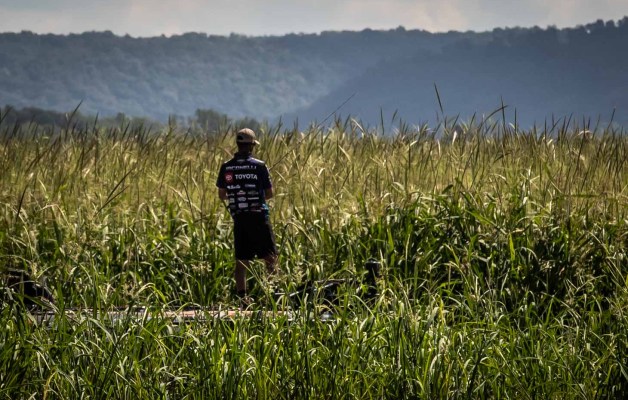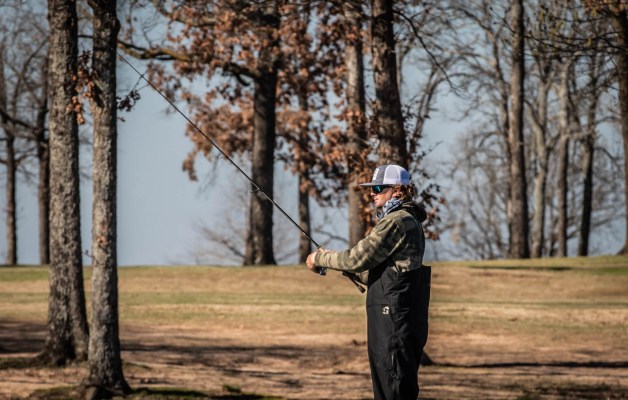
As I discussed in my last column, bass make two very distinct movements in autumn. I detailed the first phase in part one, which is the fall feed. In a nutshell, this is when the bass move shallow and aggressively binge on shad and other schooling baitfish.
This column is about the second phase, the fall migration. It typically begins when the water temperature drops somewhere below 60 degrees. The cooling water prompts the bass to start “downhilling” out of the shallows and begin migrating to their winter holding areas.
They’re leaving the pockets, creeks, shoals and flats, and they’re moving deeper along breaklines and contours. It can be a tough time to catch them because they’re not as aggressive as they were during the fall feed. But when you do find them, they’ll be stacked in bunches.
I use sonar and mapping to track breaklines and topo lines the bass follow during this migration. Today’s electronics are so good they’ve made this task pretty easy. Depending on the particular lake and how far along the migration is, the depth change along the break could be as little as a few feet or 10 feet or more.
As the bass slide deeper along these contours, which are like highways, they stop on very specific things. And when they stop, they stop in big groups. They usually park on secondary points first and then main lake points before they reach their wintering spots. Some points are not obvious. The key is that they touch a breakline that drops into deeper water.
Physical cover can also be a stopping spot. An example is a lone dock halfway out of a creek that sits over a breakline. I would regard that as a secondary point.
The bass may pause anywhere along a given breakline. Those places are often referred to as the “spot on a spot” or “the juice.” It could be a little gravel patch on a mud bottom, a boulder, a stump, even a spring of grass. Whatever the sweet spot is, it will hold 90% of the bass on that breakline.
Baits for the fall migration: The menu for migrating bass isn’t limited to things like shad, herring and alewives, as it was during the fall feed. They continue to eat, but they will take advantage of whatever forage is available wherever they happen to be during their migration. This includes things like panfish and crawfish. I start with power-fishing baits until I find the spot on the spot. Rapala DT6 to DT14 crankbaits are my go-to baits at this time. I also like dragging a 3/4- or 1-ounce Missile Baits Head Banger football-head jig around. I dress it with a Berkley Powerbait Maxscent Lizard or Creature Hawg. That combo is awesome for covering a lot of water.
Once I find a group of bass, I keep throwing power-fishing baits until they stop biting them. That might be after catching three to 10 bass. When they quit biting those baits I go to finesse offerings. Say I catch seven bass on power-fishing baits and they stop biting. By following up with finesse baits I can maximize the spot and catch maybe three or four more fish.
A 3/16- or 1/4-ounce VMC Rugby Head Jig is a staple finesse bait for me in this situation. I usually rig it with a 5- or 7-inch Berkley Powerbait Fatty Bottom Hopper Worm. A drop shot is great too. I rig it with a Maxscent Flat Worm, especially for smallmouth, and a Powerbait Water Bug for all bass species.
My third finesse option is a little 2.8-inch Berkley Powerbait Power Swimmer swimbait on a VMC 3/16- to 5/8-ounce ball head jig.
Just because you caught a bunch of migrating bass from a sweet spot one week doesn’t mean they’ll be there the next. If they’ve moved on, keep going down that breakline or to the next point to relocate them again.
You can learn more about how I fish for bass in autumn and other techniques at www.mikeiaconelli.com or www.youtube.com/c/goingike.





